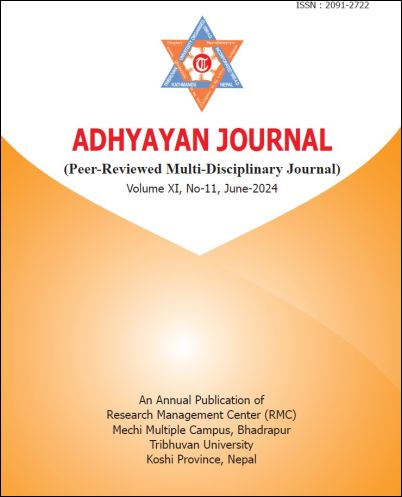Large Cardamom Farming in Eastern Nepal: Identifying Strengths, Weaknesses, Opportunities and Threats
DOI:
https://doi.org/10.3126/aj.v11i11.67076Keywords:
Ammomum subulatum, Black cardamom, Ilam district, SWOT analysisAbstract
Large cardamom, an important cash crop from eastern Nepal with significant potential in international trade, is facing challenges in terms of its production and market price. This study aims to document the perception of local farmers of Ilam district in regard to decreased production of large cardamom. First hand data were obtained through visiting the households of farmers and observing and documenting their daily chores for cardamom farming. Questionnaires were developed and were used in individual interviews (77), focus group discussions (4), and key informant interviews (5). The SWOT analysis revealed that the large cardamom farming possesses significant strengths, including high market price and minimum investment in terms of labor and fertilizer. However, it also faces notable weaknesses, such as vulnerability to diseases and environmental stresses. These strengths and weaknesses present several opportunities, including crop diversification, search for disease-resistant and superior varieties, and the adoption of scientific farming. On the other hand, the major threats encountered were the risk of uncertain return due to market price fluctuations, government oversight, lack of technical and scientific support, and vulnerability due to lack of skilled manpower and resources causing farmers to abandon large cardamom farming.




